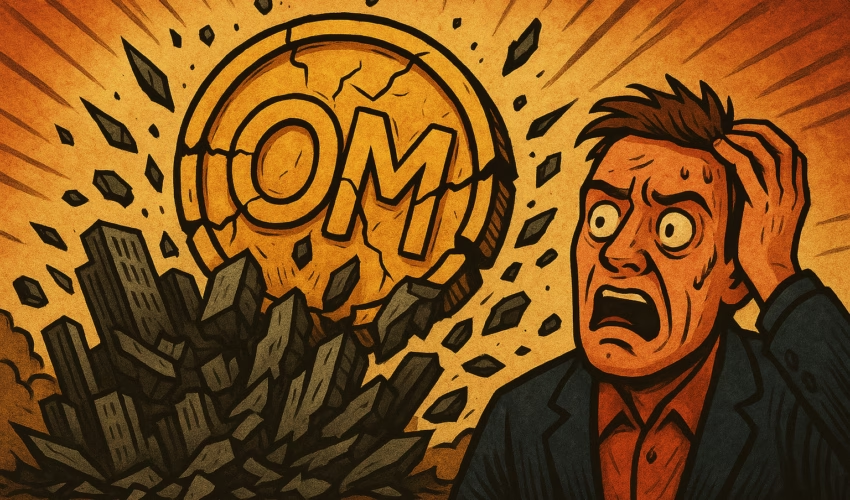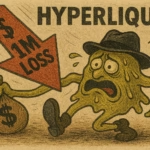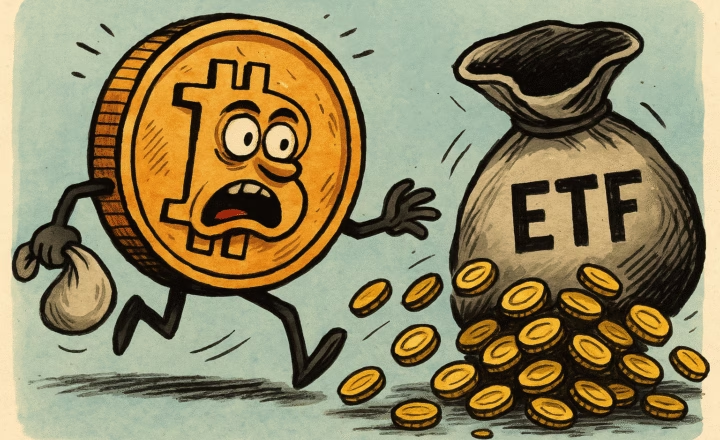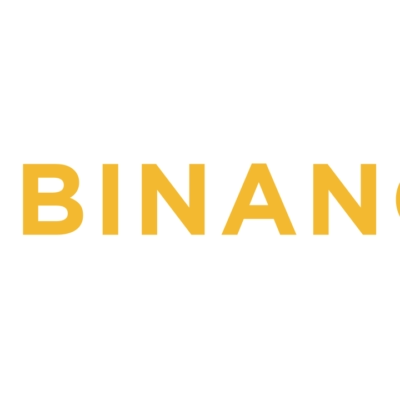Massive Sell-Off Triggers $6B Wipeout
On April 13, 2025, the price of the Mantra (OM) token collapsed by more than 90% within hours, plunging from its peak around $6.30 to below $0.50.
The sudden crash wiped out over $6 billion in market value, drawing comparisons to the infamous Terra (LUNA) collapse of 2022. Panic quickly spread across the community, with allegations of a “rug pull” circulating on social media. On-chain data showed that a wallet linked to the Mantra team transferred approximately 3.9 million OM tokens to exchange OKX shortly before the crash, intensifying suspicions of insider-driven manipulation.
Centralized Token Control and OTC Deals Raise Alarms
Mantra has long faced criticism for its opaque operations and centralized token distribution. Reportedly, over 90% of OM’s supply is controlled by the project team—a structure that raised red flags about the potential for price manipulation.
Community trust had already eroded due to delays in promised airdrops and suspicions of coordinated market activity via market makers. Additional reports emerged that the team had conducted large-scale OTC (over-the-counter) token sales at steep discounts, undermining investor confidence. As panic set in, cascading liquidations and stop-loss triggers fueled the downward spiral.
Team Denies Involvement, Blames Exchange Liquidations
Following the crash, co-founder JP Mullin took to X (formerly Twitter) to deny that the team was responsible. He published team wallet addresses showing their OM holdings were still locked and insisted the crash was caused by automatic liquidations on centralized exchanges.
Seems like the Mantra team were holding a large amount of supply and market sold everything.
Team needs to address this or $OM looks like it could head to zero.
Biggest rug pull since LUNA/FTX?? https://t.co/fU0Hk0uOGr pic.twitter.com/xSz5zP1QrH
— Gordon (@AltcoinGordon) April 13, 2025
Mantra’s official X account echoed this explanation, blaming the event on “reckless leverage and forced liquidations.” Mullin reaffirmed the team’s commitment to the project and promised a full investigation into the crash.
Guys let’s get a couple things straight:
– The TG was not deleted.
– The Team tokens all remain in custody, verifiable at this address – mantra1yejpacug78zuqkzwwuc94c0a2al4mz4yfqquam
– We are actively figuring out why these massive forced liquidations occurred and will provide…— JP Mullin (🕉, 🏘️) (@jp_mullin888) April 13, 2025
Investor Outrage Mounts as Calls for Transparency Grow
The response from the community was swift and unforgiving. Influencers and traders likened the event to the collapses of LUNA and FTX, with some dubbing OM “LUNA 2.0.” One investor claimed a loss of over $3.5 million and publicly demanded answers from both Mantra and major exchanges like Binance.
Hashtags such as #OMRugPull trended across X, while users called for legal action and tighter exchange scrutiny. Critics pointed to Mantra’s centralization, lack of communication, and opaque funding practices as unacceptable risks for retail investors.
Lessons for the Market: Red Flags Ignored
The OM crash serves as a sobering reminder of the importance of decentralization, transparency, and sound tokenomics. Experts argue that warning signs—such as extreme token concentration, secretive OTC deals, and erratic team communication—were apparent but widely ignored in the midst of a speculative rally. The collapse highlights the need for greater investor due diligence and stricter exchange vetting processes. As the crypto industry faces mounting pressure to mature, the OM debacle may become a textbook example of how quickly trust can vanish—and how difficult it is to recover once it’s lost.












